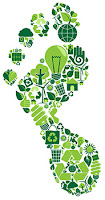I upgraded the classic
Einstein quote ‘
We can't solve problems by using the same kind of thinking we used when we created them’ by adding ‘
with the same people!’ To me it seems particularly relevant to sustainability challenges needed in todays’ world.
Prior to argue it let me first describe what
sustainable development is?
Sustainable development has been defined in many ways, but the most frequently quoted definition is from
Our Common Future, also known as the Brundtland Report:
Sustainable development is development that meets the needs of the present without compromising the ability of future generations to meet their own needs. It contains within it two key concepts:
- the concept of needs, in particular the essential needs of the world's poor, to which overriding priority should be given; and
- the idea of limitations imposed by the state of technology and social organization on the environment's ability to meet present and future needs.
I rationale that we should aim to achieve this necessary different approach to be able to change the devastating path we are currently on and as a contrast to today mostly used economy and leadership.
In my previous posts I have already described my concerns about neo-liberal economy approach, private ownership, different views (names of) current leadership tactics. Now we are just a few weeks past the COP21 in Paris on global climate changes that draw a commitment to ‘pursue efforts’ (not to take actions) to keep the temperature increase to only 1.5°C above pre-industrial levels – admittedly, a formidable technical and political flowery phrase.
Unfortunately, this is not enough anymore! We are in need for a completely different attempt than we see today – like Einstein said.
Why?


As already
Al Gore, in his foreword to the book
World changing: A User’s Guide for the 21st Century, pointed out that a shift where individuals join together to create a “turning point in human civilization ... that requires great moral leadership and generational responsibility … to build that future, we need a generation of everyday heroes, people who — whatever their walks of life is — have the courage to think in fresh new ways and to act to meet this planetary crisis head-on.”
For this
we need very unique and changed leaders than they are today and beside that much more conscious followers!
From the first conference on climate change in Tokyo back in 1987 a lot has changed but not enough has been done. While the international community and the politicians continue the talks on sustainable development and green economy time passes and pollution, poverty, destruction of our planet, depletion of natural resources have gone almost beyond the point of no return.
What we see today is the current leadership, depletion of resources and pollution not slowing but rising. The gap to sustainability is real and urgent, especially because complex problems we face require innovative /different thinking and networked / civilization(s) actions lead by such (new) leaders. And yes, not just those on the top positions but a whole generation needs to be inspired, motivated and engaged to think and act in a way that matches the scale of the challenge.








